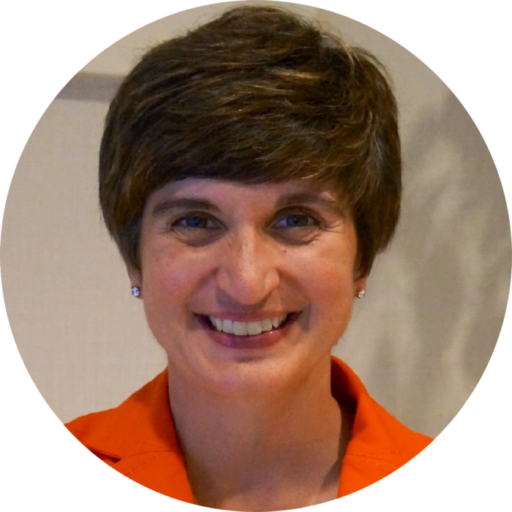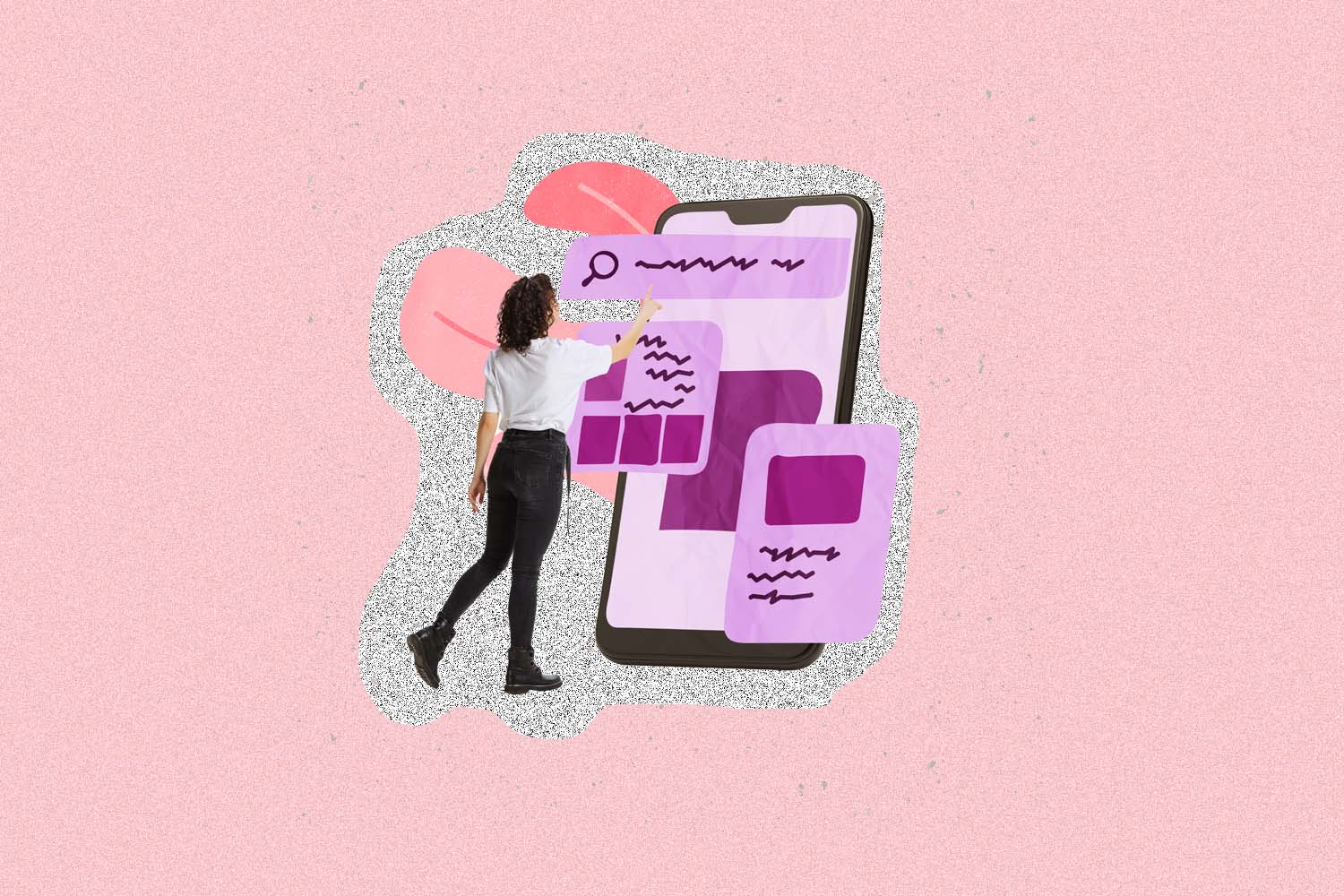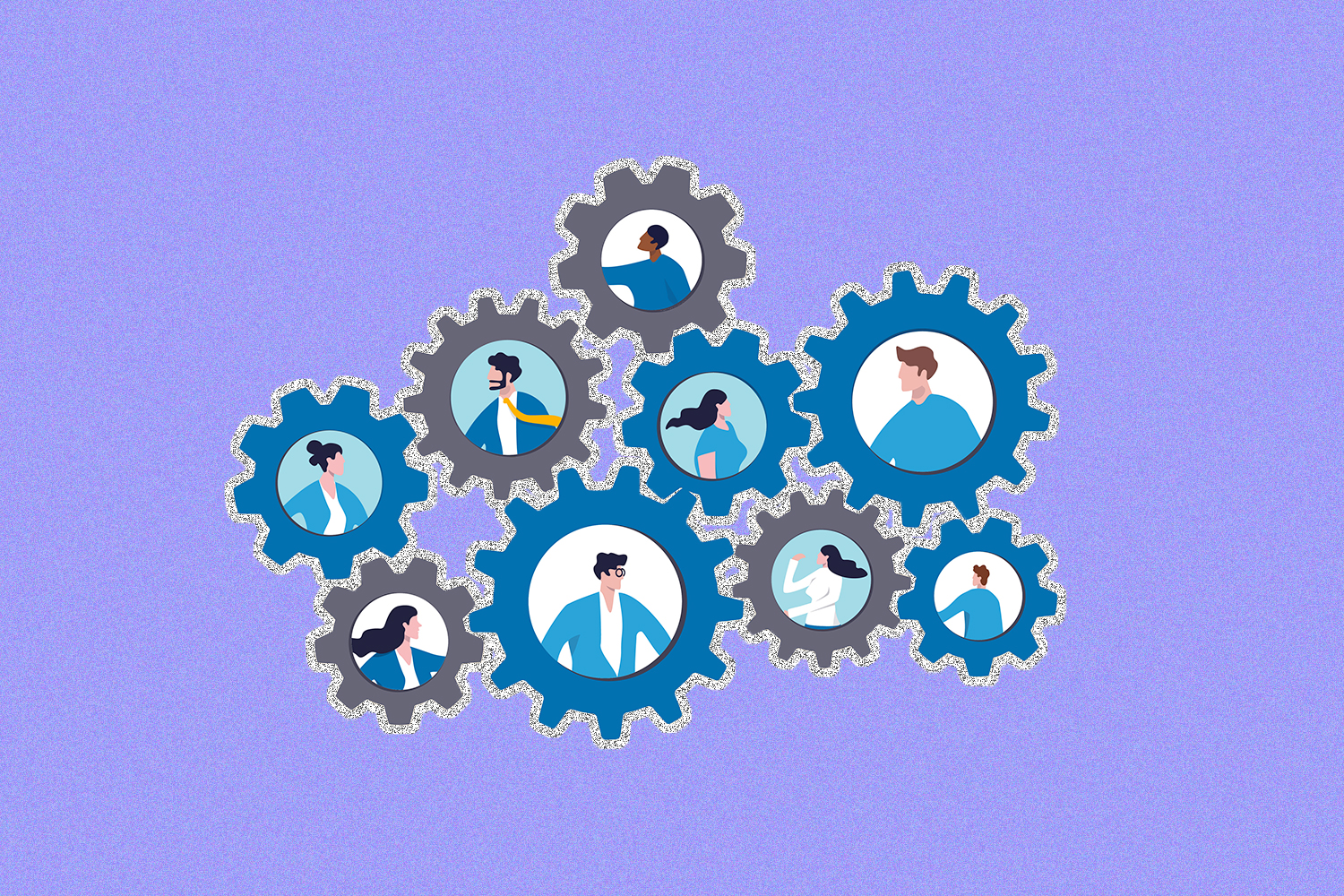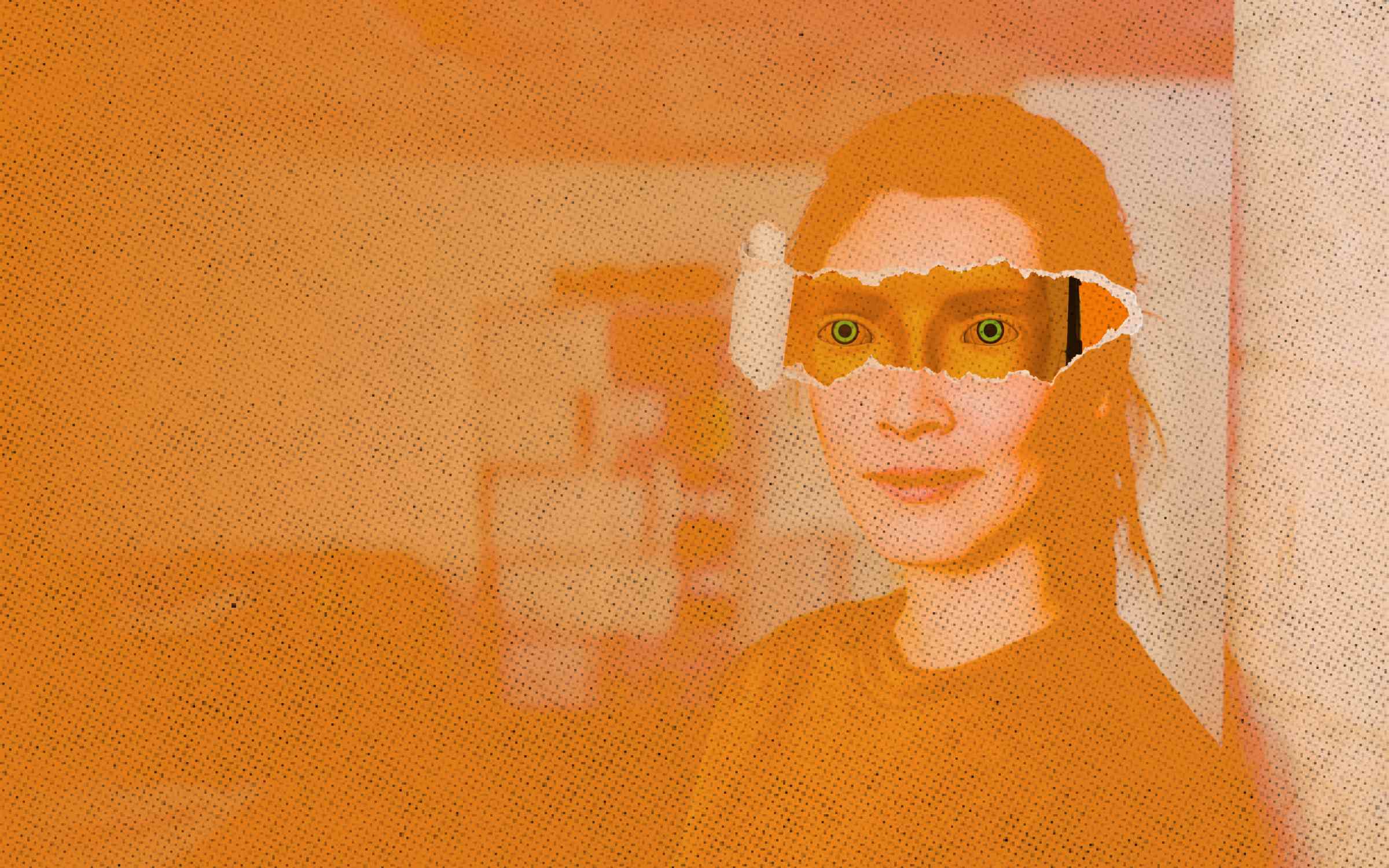Talent diversity is key for strategic advancement: companies with higher diversity have seen a 19% increase in innovation revenues and are 35% more likely to have higher financial returns than their competitors.
As senior director of organization effectiveness at Philips, a leader in health technology, Lauren Gohde has experience driving strategic change to promote diversity. She leads initiatives for the company’s North America market as Inclusion and Diversity lead for the region, which includes supporting the company’s first mentoring pilot program and increasing the percentage of females in leadership positions. Philips’ key DEI goals include expanding employee resource groups, implementing training on unconscious bias awareness, and increasing gender diversity in senior leadership roles by 30% globally by the end of 2025.
Gohde shares the change journey Philips has embarked upon to improve their inclusion and diversity. Read on for edited excerpts from our exclusive interview with Gohde.
Senior Executive Media: Tell me a little bit about your journey into this role.
Lauren Gohde: I have been with Philips for 14 years, which I always say that it’s incredible how time flies, but it’s been a wonderful 14 years. Within that time frame, I’ve held several roles within our human resources organization. Honestly, throughout all those roles, even prior to Philips — whether it was a personal passion or one that came through at work — I’ve also always had an interest in inclusion and diversity, before we actually even had an inclusion and diversity department, which is just celebrating its four-year anniversary. So we’re a little bit new on the journey.
I really had the opportunity to begin to create a global strategy and to really put thinking and a framework around, you know, what would this look like globally for Philips, which was a fantastic opportunity. And through that work, our executive committee granted us to have full-time dedicated roles within the organization. So we had two roles at the time. One was our Global Inclusion and Diversity lead in Amsterdam, where we’re headquartered, and the role that I’m in now, which is Inclusion and Diversity lead for North America. I was honored to be accepted into the role and we just crossed four and a half years. It’s been an honor and just an incredible opportunity to build something where there was nothing built, to really think about, how do you get started and what do you focus on first? I’m just super proud of how much we’ve been able to accomplish in that short time.
Senior Executive Media: Can you share some of the lessons your team has learned from your four years?
Lauren Gohde: A great question, and one that I reflect upon a lot is: how were we able to be successful? I would say the first really important piece is to realize that this is a change journey. We are trying to change a culture. Anytime you begin to think about something as a change, you need to really develop your strategy along change management principles.
So for instance, you know, it wouldn’t be successful if in my first month, we had everyone go through a mandatory training right before going into creating awareness, creating the why, creating desire to be a part of the journey, and then really beginning to build capability throughout our market. I would say that was one to really treat it as a change, especially for our culture.
I would say to also realize — this is very cliché, but it’s really true — that it is a journey, and that you or anyone is not going to be able to do everything that you want and change an organization. In your first year, I think the more that you realize that this is a build of year on year and a tiered approach to success, it really helps you to think about what does your one year look like? What do we build on in year two? And you really are able to get great traction, realizing that it is a journey that we’re on. And you really see that build through sort of a maturity model.
Communication has been essential…and continuing to message the work that we’re doing and really focusing in on walking the talk. I had an employee say to me once right in the beginning: ‘Stop. Stop telling us what you’re going to do. Begin showing me what you are doing right.’ So having quick wins, having great proof points as you go forward is really important.
And I’ll say for me and for Philips, not just for me, I’ve just been so blessed with having an incredible leadership team’s support. And I honestly don’t know what I would have done or if we would have been as successful as we’ve been in a short time without our CEO’s and his direct staff’s support of the work, getting into it with us, investing in resources.
Senior Executive Media: Can you share one example of the evolution of your program and how things have changed since your beginning?
Lauren Gohde: My first question on day one is: where do we start? And I’m really looking at our organization as to where there are opportunities, and truly beginning to listen to our employees. And I would say, if I had to make a distinction of what I think is really special about the work that we do here at Philips is that we always listen before we act. So what I think is the right strategy, say for a specific ERG, or an underrepresented group at Philips, is not necessarily the right direction. So we always listen to our employees before we make any decisions about our strategy. And that’s something I’m super proud of, and our evolution around that.
If I had to pick one item, where I’ve really seen us evolve, it’s our commitment to diverse representation. And I say that not to say that our commitment wasn’t there in year one, but to see how we have evolved as an organization with a clear commitment to not only the attraction of diverse talent to meet market availability, [but also] with the development and retention of our existing diverse talent. I’ll share just a quick story on that one. Like many organizations…when we returned to the office [after] the killing of George Floyd, it was a very significant period for us and the decision that we had to make was, are we going to lean in here? And the decision was yes. Beyond that was a sincere look at our own representation, specifically that of talent. You know, lifting up the hood of our car really showed us that we are underrepresented as it relates to Black talent in leadership positions in North America… We have now created a multi-tier commitment from our leadership team to improve that diverse talent.
What I’ll say was really pivotal during that time was we didn’t just say, ‘We’re underrepresented. Let’s go on a hiring campaign. Let’s go hire, hire, hire and not be underrepresented.’ Our CEO, and the Global Head of HR and myself sat down and we looked at our underrepresentation and we said no, before we go out and create a recruiting strategy, let’s really ensure that there are no cultural elements that are blocking us from attracting Black talent or for Black talent leaving the organization.
And we engaged in an external research project with a company called Truth. It’s a UK-based market research firm. And they launched a research project interviewing 25 of our Black employees internally, 25 external Black talent, and came back to us with a really insightful roadmap of what’s working well in our culture and what are some elements that we really have an opportunity to improve like representation, mentoring, sponsoring, perhaps microaggressions in our culture… We took the time to listen before building a strategy. And we encouraged open and safe platforms for employees to give us feedback that at first was not very easy to take in. But those decisions really created a strategy for us today where we are retaining our diverse talent, where we are increasing representation. Not always at the speed that we would like, but it was pivotal for us to really put our ear into the organization, to listen and to truly make a commitment where we had not made a commitment before.
“We have evolved as an organization with a clear commitment to not only the attraction of diverse talent to meet market availability — [and also to] the development and retention of our existing diverse talent.”
Senior Executive Media: Can you give me an example of something that research identified that was a barrier for Black talent? What was done to remove the barrier for those talented candidates?
Lauren Gohde: One was no formal mentoring or sponsoring programs at Philips. Based on that feedback, we just completed our first mentoring pilot with 15 of our Black talent as mentees and 15 of our extended leadership team members as mentors in a six month journey. It was just an incredible experience that went very well. The matching was great pairing, feedback from both mentors and mentees was very strong. And we targeted a specific level in the organization that is one step below what we would consider “a leadership level.” So we were really committed to building a leadership pipeline through the identification of that talent, based upon the learnings from that pilot. [Next], we are launching two additional, larger mentoring programs really focused on our underrepresented talent as well. So that was one. We listened, we heard no mentoring, we did a pilot, and that’s going to be growing to be able to reach a larger piece of our population.
The other one was formal inclusion and diversity learning. Some of our employees were feeling that there was bias towards them, that they were receiving microaggressions. [So] we launched four mandatory e-learnings for our full North America market to 20,000 employees, on the topics of race in the workplace, unconscious bias microaggressions, and psychological safety. So once again, we heard that these were happening in our culture. We wanted to build capability to address them, and we launched the mandatory Inclusion and Diversity Learning journey.
And I’ll say one more thing. We didn’t really have a recruiting strategy to attract diverse talent. We weren’t doing anything differently in terms of our outreach strategies. We kind of went to our same sources, whether that was LinkedIn or Philips’ website. We really didn’t have the capability internally to think about how we build a diverse talent pipeline. And that came out in the survey: ‘I don’t really see myself in the organization. I don’t see myself in leadership roles.’ And so we are building with our talent acquisition team resources that are specifically dedicated to the attraction of diverse talent into our organization. And we have now a diverse recruitment talent lead, which is amazing. And for the first year, this year, we are going to be a sponsor at the National Black MBA Conference, which we’re super excited for, and really just walking the talk as it relates to sponsorship and creating a diverse talent pipeline.
Senior Executive Media: Tell me a little bit about the progress that has been made in terms of numbers if that’s possible.
Lauren Gohde: We measure our success on a few levels. One is a global ambition at Philips: the increase of gender diversity in leadership positions. And our goal at Philips is to increase our gender diversity globally, by 30% at the end of year 2025. In North America, we’ve reached that goal, which has been amazing. When I started in this position, we were at 18% of women in leadership positions. And really, really proud to be able to say that we reached our goal of getting to 30%. Now, that’s not parity, and we still have work to do. But through the learnings that we’ve gathered since 2018, in [terms of] how do you increase and retain a specific population, we’ve been able to take those learnings and go broader. So we’ve been able to see an increase in gender and gender diversity in leadership positions, which has been awesome. Again, we’re not immune to the Great Reflection or the Great Resignation as many other organizations call it. But it’s also made us that much more intentional as to what we’re doing for the retention of our existing talent.
In terms of diverse representation, I would say we measure ourselves as it relates to where we are currently and what is market availability based upon our industry, based upon our geography, what is census data telling us? And I will say that we are underrepresented as it relates to Black talent and Latinx. And we have made progress especially with our Black talent. We’ve close to doubled our initial numbers and are getting closer. Our commitment is by the end of this year we are meeting market availability.
Each quarter, from a feedback perspective, we have launched our employee engagement survey. That’s a little bit unique for companies that usually do this once or twice a year. We do it quarterly. And there are questions each quarter that we ask our employees as it relates to inclusion and diversity: Do you feel like you could be yourself? Do you have a sense of belonging?… And I’m happy to say that in that category, we’re close to about 80% favorable at each quarter. Again, we have work to do. But it’s really important for us to create those platforms of listening to our employees in a very safe and anonymous way. Give us that feedback.
Senior Executive Media: Is there anything that you would like to talk about in terms of initiatives or progress that we haven’t had a chance to discuss?
Lauren Gohde: A key part of our success and the work that we’ve done has been the creation of our employee resource groups, otherwise known as ERGs. ERGs came about in year two. Our first ERG, what we call the BERG, is our Black employee resource group. We didn’t know this when we launched it, but BERG means mountain in Dutch, which, as a Dutch company, we just felt that was so impactful. They were our first one. We launched the BERG right before the pandemic, right before we entered into the space… with such significant race relations and racial divide in our communities. BERG has been so instrumental and has had incredible growth in terms of their membership. Because of their leadership, the differences that they’ve made in their culture, and the voice that they bring to our table, we now have 13 ERGs. Our 13 have really led the way from the example that the BERG has created in our organization and the ERGs have been just wonderful in terms of their own development, in terms of cross ERG collaboration, and has really allowed for leadership to come about within each of our networks. So our ERGs are really leading the way in the work that we’re doing today. So that’s a really important one.
And what makes Philips stand out in terms of our journey is we listen before we act. We really create a place for our employees to give us feedback, both what’s going well and what’s not, to really form and shape our strategy. I would say we also follow the platinum rule, which is we really encourage all of us to treat you the way you want to be treated versus the way I want to be treated, to really understand your experiences and how that shapes your experience at Philips.
We really treat inclusion as a verb, meaning, it’s intentional, it’s actionable, and it’s observable. And we do call ourselves I and D, Inclusion and Diversity. And that wasn’t trying to mix things up. We really switched the D and I to lead with the I. And we have a phrase here that we say a lot, which is, if you’re not actively including, you’re probably unconsciously excluding. And that’s really the basis of the work that we do here.







